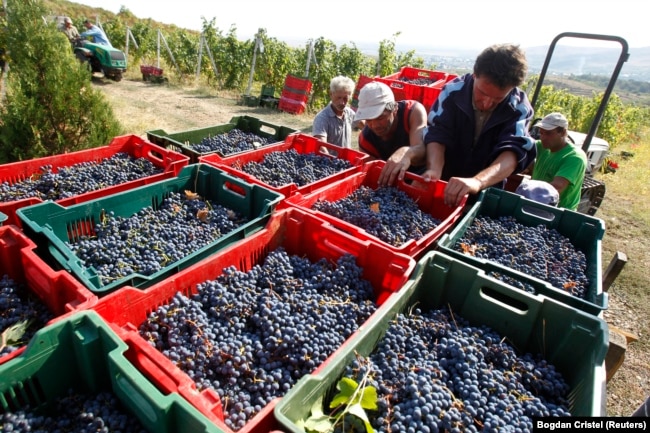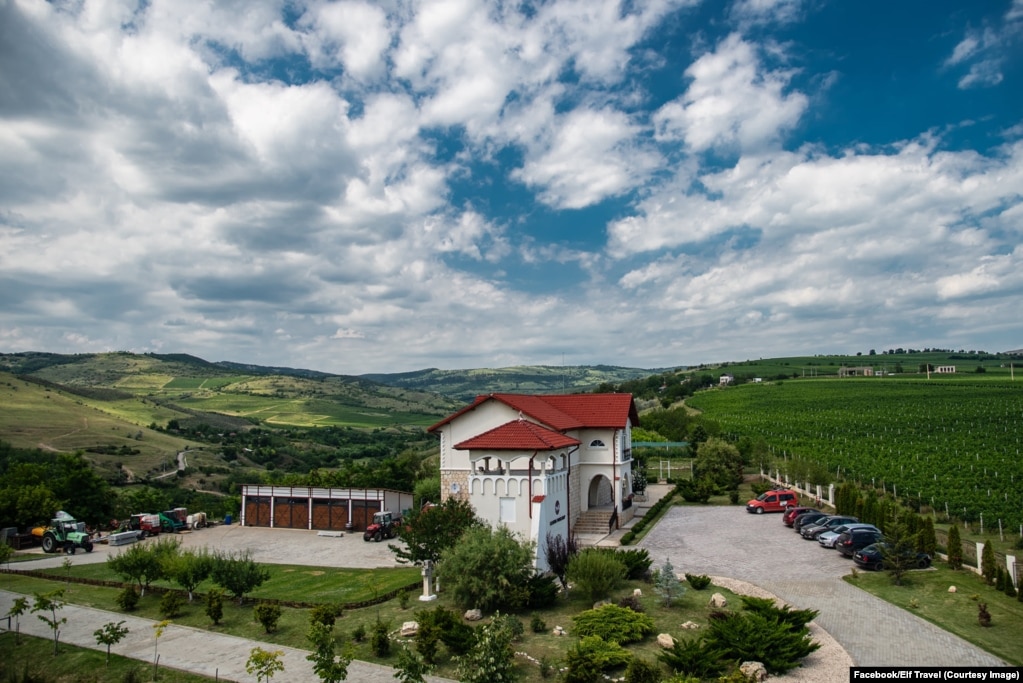Romania is one of the most productive wine countries in the world, but only a tiny fraction of its output is bought abroad. Experts explain why, and what can be done to revive the sparkle of Romanian wine.
Romania’s vineyards enjoyed a bumper harvest in 2021. The country produced 530 million liters of wine — around as much as Hungary and Austria combined. Romania now ranks sixth in the EU for volume of wine produced, and 12th in the world.
But despite a bounty of rich reds and dry whites this year, as usual, the vast majority will be drunk inside Romania. Only around 7 percent of the country’s wine production for 2021 will be exported. In recent seasons, foreign sales made up an even smaller amount, with Romania shipping out less than 5 percent of its wine.

Romania currently imports around 65 million euros’ worth of foreign wines each year ($74 million), while earning just 35 million ($40 million) from exports. Exported wine is sold to the U.S., Canada, Switzerland, and Japan.
Why Does Romania Sell So Little Of Its ‘Vin’ Abroad?
Many believe the biggest hurdle facing Romania’s wine industry is the poor reputation acquired during the country’s years of communism. Under Nicolae Ceausescu, the authorities focused on quantity over quality from their state-controlled wineries. Many family traditions and techniques dating back centuries were broken up as the state stepped in to take over wine production.

According to a paper by Professor Paul Taylor, an expert in International Marketing at Germany’s Hochschule Furtwangen University, a key weakness of Romania’s wine industry is the hundreds of thousands of landholders who work tiny plots of land. Although several large-scale operations own vast swaths of Romania’s vineyards, the remainder is split into countless swimming-pool-sized vineyards that “are difficult to farm efficiently or profitably” for export, Taylor writes. Some small vineyard owners are still fighting to recover land seized under communism.
There is also a drastic shortage of skilled workers. Since Romania joined the EU in 2007, many vintners emigrated for jobs that offer substantially larger salaries in wine countries such as Italy, Spain, and Germany. “Since the fall of communism, Romania has suffered from emigration of skilled workers,” Taylor writes, “a situation that worsened with membership of the European Union.” Nearly 20 percent of Romania’s working-age population live abroad, mostly in Western Europe.
Romanian vintners have benefited from EU funds, however. Romania has received around 45 million euros ($51 million) annually for its wine industry since 2013. Most of the money has been spent on replanting vineyards.

Romania’s wine industry also suffers from not having a state-backed marketing body pitching the country’s unique grape varieties and long history of winemaking to the world.
But there is some optimism that the country will capture the high-end wine market through grassroots efforts. Andreea Siposean, the manager of a Romanian travel agency told RFE/RL’s Romanian Service that — after a weekend getaway to a winery with her husband in 2020 — she “immediately realized the potential of a trip like this” and her agency joined a growing number of companies offering wine tours for domestic and foreign tourists at a fraction of the cost of equivalent experiences in France or Italy.

From nearly 250 commercial wineries in Romania, around 40 are able to support wine tourism.
Boutique winemakers in Romania are able to fetch higher prices for their bottled offerings when people are exposed to the landscape and history of the various wineries, Taylor says. And it is hoped that Romanian wine’s image will begin to mature when enough tourists return home with an appreciation for the country’s viticulture.
Written by Amos Chapple, based on reporting by Marian Pavalasc, a freelance correspondent for RFE/RL’s Romanian Service






